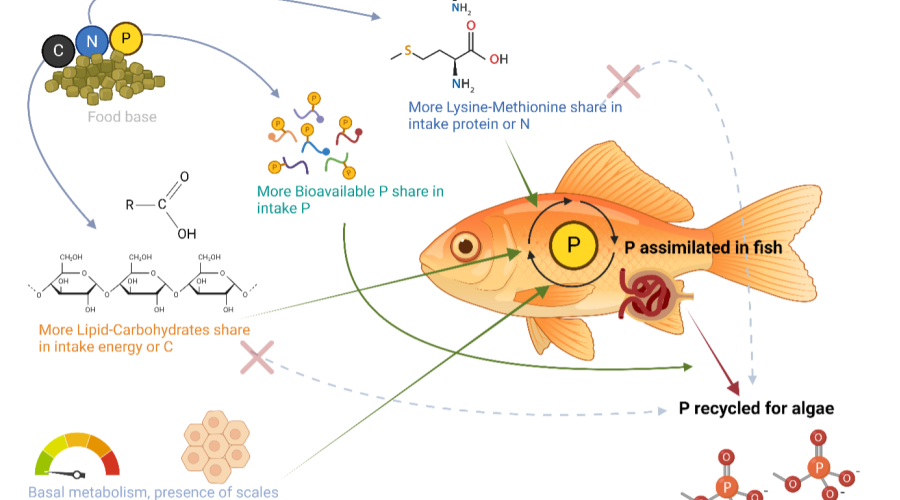Fish-driven phosphorus recycling in aquatic systems

Exciting new research from our Pond Fish Nutrition Group explores how fish manage phosphorus in shallow lake ecosystems such as ponds, significantly impacting algal growth. In a feeding state (active metabolism), fish typically balance their nutrient levels by releasing excess nitrogen and phosphorus, benefiting algal growth. Fish can store more phosphorus and supply less to algae when the food base is selectively rich in lysine + methionine in overall intake protein and non-protein energy (i.e., carbohydrate and lipid energy share in overall intake energy). To the extent that there could be some expanded scope of phosphorus storage more than the food could provide, leading to potential phosphorus absorption from water. Conversely, a lack of these nutrients in the food base leads to increased phosphorus release by fish, promoting algal growth. Scaly fish tend to recycle less phosphorus for algae than scaleless fish (scales retain[AK1] a significant amount of phosphorus), whereas during basal metabolism such phosphorus recycling generally ceases.
Our study reveals that not all carbon, nitrogen, or phosphorus in aquatic food webs are equally important for predicting phosphorus recycling by fish. Certain forms of nitrogen or carbon are more influential in regulating phosphorus homeostasis. Even with constant carbon, nitrogen, phosphorus, or their ratios in the food base, lysine-methionine bound nitrogen and non-protein bound carbon could vary greatly in natural food webs and dictate fish stocks as either being phosphorus source or sink. Balancing fish diets artificially and maintaining scaly fish stocks might offer future solutions for managing eutrophication.
Detailed information can be found in the original article: Roy, K., Vrba, J., Kuebutornye, F.K., Dvorak, P., Kajgrova, L. and Mraz, J., 2024. Fish stocks as phosphorus sources or sinks: Influenced by nutritional and metabolic variations, not solely by dietary content and stoichiometry. Science of the Total Environment 938, 173611.
This study was funded by the Czech Science Foundation (project GAČR 22-18597S), and the graphical abstract was created with BioRender (License MQ26VEPQTJ).
Written by: Koushik Roy, Ph.D.
[AK1]Or contain? The result is identical.



